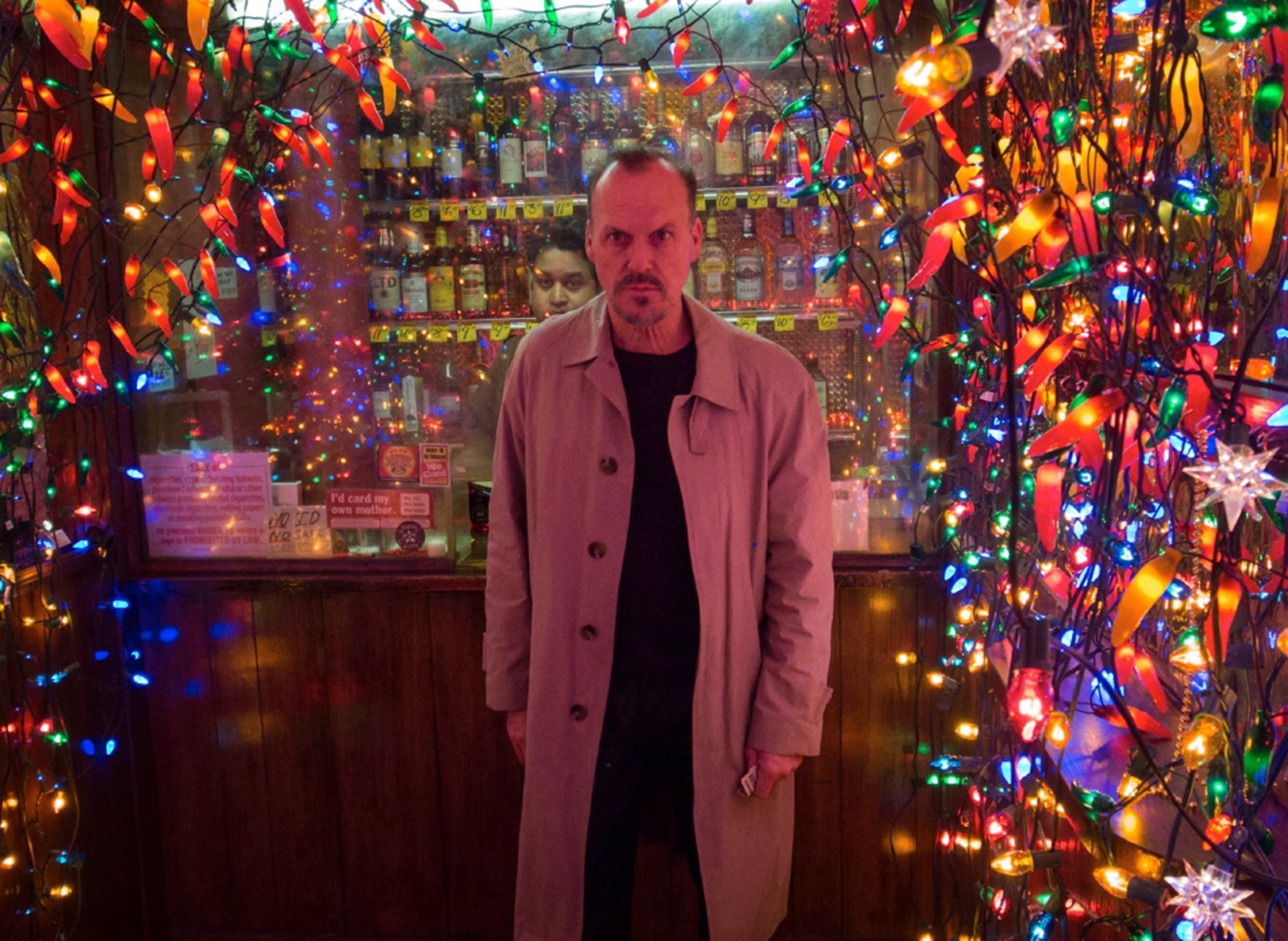
Ages ago, Riggin Thompson (Michael Keaton) parlayed a comic-book creature called Birdman into movie stardom, but lately he has struggled to be taken seriously as an actor. So he’s making his Broadway debut as the leading man, director and adapter of the Raymond Carver short story “What We Talk About When We Talk About Love.” Nearly everything goes wrong in previews, and Riggin trusts only the Birdman voice in his head. One night he miraculously takes flight–a superhero with his powers restored–as his avian alter ego triumphantly growls, “Gravity doesn’t apply to you.”
No, but it applies to Birdman or (The Unexpected Virtue of Ignorance), the oddly punctuated title of Alejandro González Iñárritu’s daredevil comedy. Last year, in Gravity, two of Iñárritu’s Mexican amigos, director Alfonso Cuarón and cinematographer Emmanuel Lubezki, achieved movie wonder with sumptuous long takes, including that astonishing 13-min. first shot. Iñárritu’s own early films–Amores Perros, 21 Grams and Babel–boasted a narrative complexity in their sprawling tales of fates interlocked across a city or around the world. But for Birdman, he borrowed Lubezki and ramped up Gravity’s degree of difficulty: nearly all of this two-hour movie seems to have been shot in a single take.
You may ask why, since the story takes place not in two hours but in the week or so leading up to Riggin’s opening night. This isn’t truly a one-take movie, like Alexander Sokurov’s enthralling Russian Ark–here, scenes lasting 10 minutes or more are edited together with invisible transitions–but Birdman is still a unique technical accomplishment. Shot in 30 days, with the actors’ and the camera’s movements calibrated to the inch and the millisecond so that the action flows smoothly, the picture has the jagged energy of a sustained guerrilla raid choreographed by Bob Fosse. It’s a precision ballet whose most impressive effect is that it plays out like real theatrical life.
And whereas Gravity had just Sandra Bullock and George Clooney, Birdman has seven major characters running through the caverns of St. James Theatre: Riggin and his co-stars Lesley (Naomi Watts), Laura (Andrea Riseborough) and Mike (Edward Norton), plus Riggin’s daughter Sam (Emma Stone), ex-wife Sylvia (Amy Ryan) and manager Jake (Zach Galifianakis). Another, the critic Tabitha (Lindsay Duncan), waits to pounce on Riggin and write a review that would kill his play.
Birdman is All About Eve plus Fosse’s All That Jazz times Fellini’s 8½, with the requisite flirtations, collisions and anxieties. And like any clever inside-showbiz satire, Birdman exploits its star’s biography. A quarter-century ago, Keaton played Bruce Wayne in Tim Burton’s Batman; he reprised the caped crusader in the 1992 sequel before ditching the costume for film work as a character actor. Yet his Riggin still craves fame. He has a nightmare of being on a plane with Clooney (who also played Batman), and when it crashes the headlines mention only Clooney.
That attitude could just be sour grapes–the snobbery-envy that afflicts many actors. But it fits Birdman’s skewed comic vision. The key for Riggin to rekindle his celebrity, which these days means notoriety, is through some outlandish public gesture: a walk through Times Square clad only in his underpants, or a more explosive accident onstage.
Now 63, his face road-mapped with lifelines, Keaton summons the weariness of age more than the manic verve from Burton’s Beetlejuice, his finest early role. His Riggin seems ready to sag into suicidal defeat, not ascend into mad apotheosis. Yet the star’s performance is the compass that guides all the actors who must play off him. Birdman represents not just Keaton’s fictional apologia but also a comeback of near superheroic proportions.
Finally, the Gravity comparison is unfair. Cuarón’s film launched audiences into a stratosphere of emotions; Birdman is grounded by the everyday problems of show people. It’s a comedy, after all–one that mixes its star’s career with its protagonist’s angst and, through the magic of art and technology, makes them soar.
More Must-Reads From TIME
- Dua Lipa Manifested All of This
- Exclusive: Google Workers Revolt Over $1.2 Billion Contract With Israel
- Stop Looking for Your Forever Home
- The Sympathizer Counters 50 Years of Hollywood Vietnam War Narratives
- The Bliss of Seeing the Eclipse From Cleveland
- Hormonal Birth Control Doesn’t Deserve Its Bad Reputation
- The Best TV Shows to Watch on Peacock
- Want Weekly Recs on What to Watch, Read, and More? Sign Up for Worth Your Time
Contact us at letters@time.com